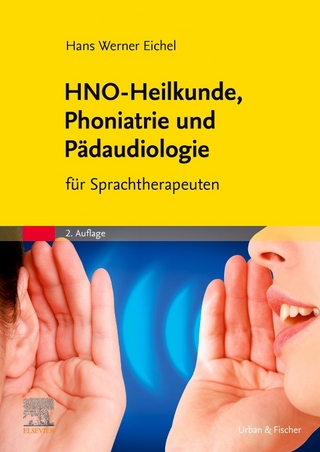
Fluency Disorders
Plural Publishing Inc (Verlag)
978-1-59756-407-6 (ISBN)
- Titel ist leider vergriffen;
keine Neuauflage - Artikel merken
Fluency Disorders is a comprehensive, graduate-level textbook that offers a much broader scope on this subject than most contemporary textbooks. Whereas many textbooks classified under "fluency disorders" focus almost entirely on developmental stuttering, Kenneth J. Logan provides in-depth information about fluency functioning across a range of clinical populations - including developmental stuttering. This textbook offers students a detailed exploration of contemporary research and analysis on issues such as (1) processes integral to fluent communication; (2) ways in which researchers from various fields of speech-language pathology conceive fluency; (3) etiologies and characteristics of disorders that affect communication fluency; and (4) applicable and effective approaches to clinical assessment, prevention, and treatment for disorders that affect communication fluency. With developmental stuttering as a primary focus of this text, Fluency Disorders is ideal for graduate courses on developmental stuttering.Moreover, through addressing normal aspects of fluency, fluency and communication, and the fluency characteristics of communication disorders other than stuttering readers can (1) describe how developmental stuttering fits within the broader framework of communication disorders; (2) explain why fluency is a relevant, functional construct for many communication disorders; and (3) develop skills in assessing and treating fluency-related issues.
This approach is consistent with the current standards for clinical certification specified by the American Speech-Language-Hearing Association's Council for Clinical Certification (CFCC). Fluency Disorders is divided into four main sections: Fluency and Verbal Communication address general fluency-related concepts, approaches to describing fluency, and fluency characteristics of typical speakers. This section also addresses issues related to individual differences, cultural and bilingual influences, and fluency changes over the lifespan.Characteristics and Etiology detail the characteristics and etiologies of various fluency disorders, including: developmental stuttering, cluttering, acquired stuttering, and information about uncommon fluency problems. Clinical Considerations review the research on assessing and treating fluency impairments with clear, practical explanations of how these assessments and treatments are implemented. Summary and Conclusions summarize the main themes and concepts, as well as general conclusions about the current state of basic and applied research with fluency disorders, associated clinical practices, and future directions.
With specific, easy-to-follow instructions for conducting key clinical procedures, decision-making flowcharts, and basic concepts related to evidence-based practice, Fluency Disorders is truly distinguishable from other texts in the field.
Kenneth J. Logan, PhD, CCC-SLP, has specialized in the assessment and treatment of stuttering within university settings for more than 20 years. Since 1995, he has been on the faculty in the Department of Communicative Disorders at the University of Florida. During that time, he has taught courses, supervised clinical activities, and conducted research on fluency and fluency disorders. For the past six years, he has served as Associate Editor of the Journal of Fluency Disorders. In addition, he has served as a referee for the Journal of Speech, Language, and Hearing Research, the American Journal of Speech-Language Pathology, and the Journal of Acoustical Society of America. Dr. Logan has given dozens of presentations on stuttering at national and international conferences, and he has authored nearly 20 stuttering-related articles in peer-reviewed journals. He is co-author of the Test of Childhood Stuttering, a recently published assessment tool for use with children. His current research focuses on the effects of behavioral treatments and assistive devices with teens and adults who stutter
A.Section 1: Foundational Concepts 1.Conceptualizing Fluency a.Dimensions of Fluency i.Continuity ii.Rate iii.Rhythm iv.Effort v.Naturalness vi.Talkativeness vii.Stability b.A working Model of Fluency c.Summary 2.Fluency and Speech Production a.Models of Speech Production i.Basic components of speech production ii.Sources of evidence iii.Primary stages of speech production b.Conceptualization i.Lexical concepts ii.Intentions and memory iii.Utterance function iv.Conceptualization and fluency c.Formulation i.Lemma activation and syntactic specification ii.Morphological and phonological encoding iii.Prosodic encoding iv.Phonetic encoding v.Neural correlates of word formulation vi.Formulation and fluency d.Articulation i.Articulatory subsystems ii.The nature of speech motor control iii.The role of feedback in speech motor control iv.Models of speech motor control v.Neural correlates of speech motor control vi.Articulation and fluency 3.Conceptualizing Disfluency a.Defining Fluency i.Isolating disfluency segments b.The Structure of Disfluency i.The reparandum ii.The moment of interruption iii.The editing phase iv.The repair phase c.Labeling Disfluency i.Revising ii.Abandoning utterances iii.Pausing iv.Interjecting v.Repeating vi.Prolonging and blocking d.Variations in Disfluency Form i.Variations in the editing phase ii.Variations in the repair phase iii.Nested errors iv.Repetition of word- and utterance-final segments e.Limitations of Disfluency Labeling Systems i.Lack of standard terminology ii.Lack of comprehensive terminology iii.Inconsistent relationship between labels and structure iv.Reliance upon listener-based analyses f.Summary 4.Fluency Performance in Typical Speakers a.Defining Normal Performance i.Qualitative versus quantitative perspectives ii.Type versus manner of behavior iii.Performance variability b.Continuity in Typical Speakers i.Disfluency frequency ii.Types of disfluency iii.Context effects iv.Disfluency structure v.Disfluency in very young children c.Rate in Typical Speakers i.Articulation rate ii.Speech rate iii.Speech initiation time iv.Diadochokinesis d.Rhythm in Typical Speakers i.Length of speech disfluencies ii.Repair attempts and repetition units iii.Temporal structure of repetitions iv.Pause duration e.Effort in Typical Speakers i.Instrumental measures ii.Listener and speaker ratings f.Naturalness in Typical Speakers i.Listener ratings g.Talkativeness in Typical Speakers i.Verbal output ii.Participation iii.Succinctness iv.Communicative flexibility B.Section 2: Etiologies and Characteristics of Fluency Disorders 5.An Introduction to Fluency Disorders a.Disorders versus Differences b.Impairment versus Disability c.Disorders versus People with Disorders 6.Developmental stuttering a.Epidemiology b.Characteristics c.Etiology d.Consequences 7.Non-developmental stuttering a.Neurogenic stuttering i.Epidemiology ii.Characteristics iii.Etiology iv.Consequences b.Drug-related stuttering i.Epidemiology ii.Characteristics iii.Etiology iv.Consequences c.Psychogenic stuttering i.Epidemiology ii.Characteristics iii.Etiology iv.Consequences 8.Cluttering a.Epidemiology b.Characteristics c.Etiology d.Consequences 9.Other Patterns of Atypical Fluency a.Fluency and Language Impairment b.Fluency and Cognitive Impairment c.Fluency and Second-language Acquisition C.Section 3: Clinical Assessment 10.Fluency Assessment: Framework and Protocols a.Assessment Terminology b.The Goals of Assessment c.Case Histories and Patient Interviews d.Speech Sample Elicitation e.Formal Tests of Fluency Performance f.Informal Fluency Assessment Tools g.Assessing Coping Strategies and Associated Behaviors h.Assessing Social, Emotional, and Cognitive Variables i.Assessing Performance in Other Aspects of Speech and Language 11.Methods of Speech Sample Analysis a.Measuring Disfluency Frequency and Type b.Measuring Speaking Rate c.Measuring Disfluency Duration d.Assessing Effort and Naturalness e.Assessing Talkativeness i.Participation ii.Output iii.Speech Acts f.Computer-based Tools 12.Interpreting Fluency Data and Making Recommendations a.Differential Diagnosis i.Fluency Disorder Categories ii.Differences versus Disorders iii.Normal Variation b.Rating Severity i.Formal approaches ii.Informal approaches c.Estimating Prognosis i.Factors that Contribute to Prognosis ii.Issues with Children iii.Issues with Teens iv.Issues with Adults d.Making Recommendations i.Treat, Revaluate, or Discharge? ii.A framework for goal selection iii.What is a "good" outcome? iv.Evaluating External and Internal Evidence v.Involving the Patient and Caregivers in Treatment Decisions vi.Making Referrals D.Section 4: Treatment Approaches 13.Treating Stuttering a.Primary Behavioral Strategies b.Capacity versus Performance c.Developing Individualized Treatment Plans d.Treatment Outcomes Research e.The Role of Assistive Devices f.Self Help Organization and Other Resources g.Improving Fluency versus Improving Quality of Life h.Assessing Outcomes i.When Stuttering is not the Only Disorder j.Considerations for Non-developmental Forms of Stuttering 14.Treating Cluttering and Other Types of Fluency Problems a.Treating Cluttering i.Primary Behavioral Strategies ii.Language and Articulation Targets iii.Contrast with Stuttering Treatment iv.Developing Individualized Treatment Protocols v.Treatment Outcomes Research vi.Assessing Outcomes b.Treating Other Types of Fluency Problems i.Disfluency in the context of language impairment ii.Disfluency in the context of cognitive impairment iii.Disfluency in the context of second language acquisition 15.Conclusions 16.References 17.Appendices
| Zusatzinfo | B/W |
|---|---|
| Verlagsort | San Diego |
| Sprache | englisch |
| Maße | 178 x 254 mm |
| Gewicht | 1066 g |
| Themenwelt | Medizin / Pharmazie ► Gesundheitsfachberufe ► Logopädie |
| ISBN-10 | 1-59756-407-9 / 1597564079 |
| ISBN-13 | 978-1-59756-407-6 / 9781597564076 |
| Zustand | Neuware |
| Haben Sie eine Frage zum Produkt? |
aus dem Bereich


